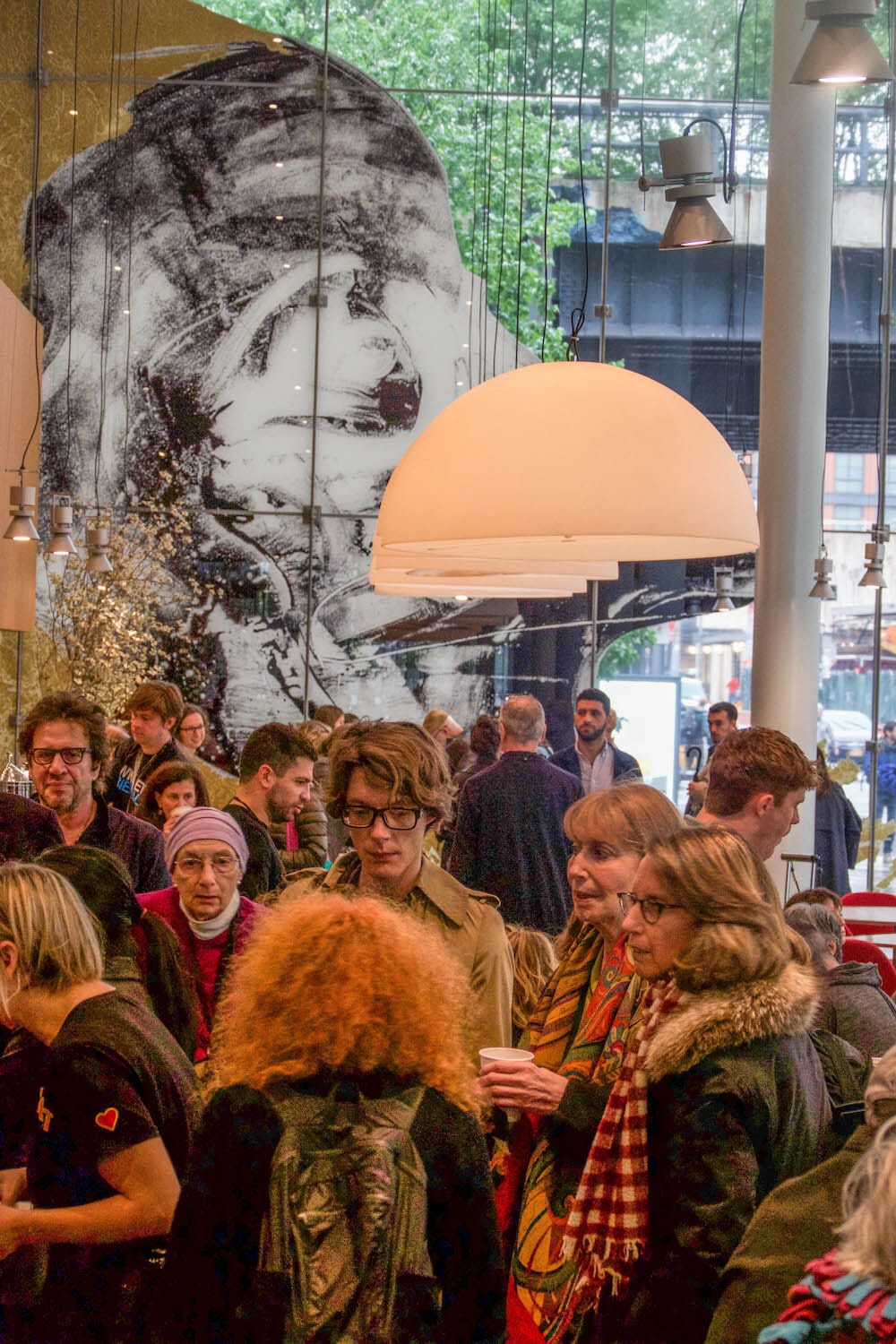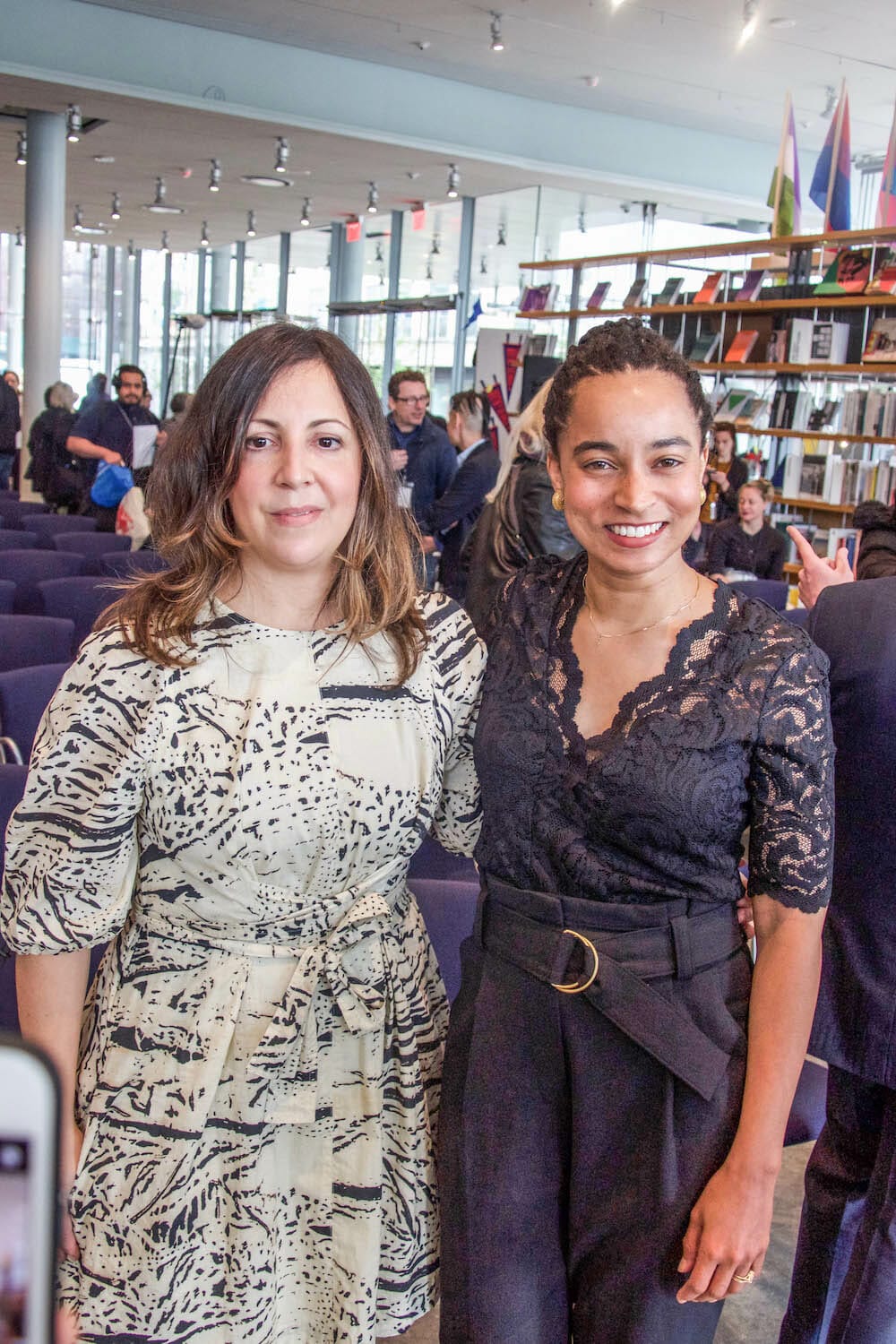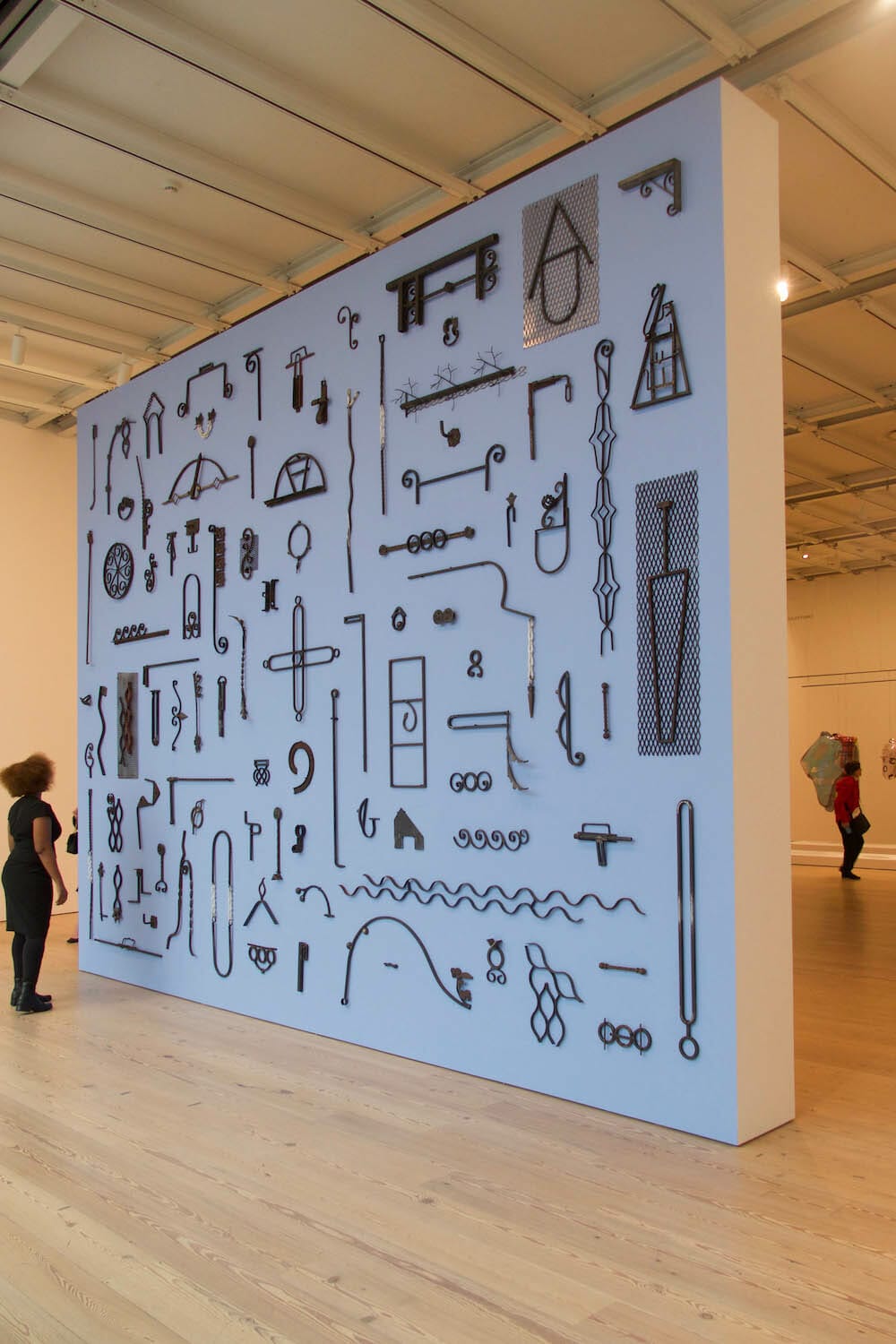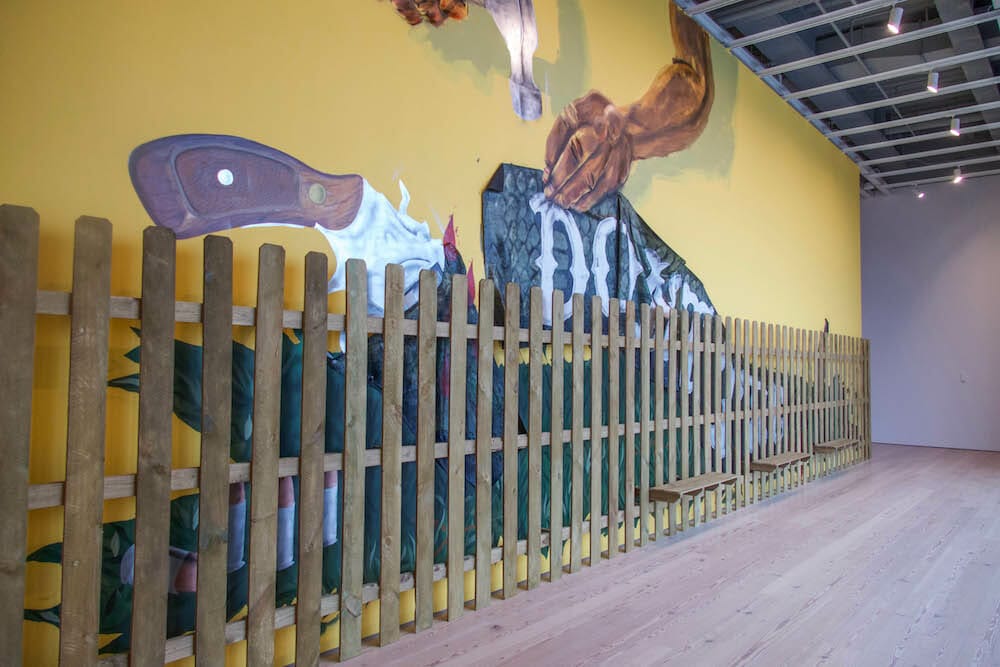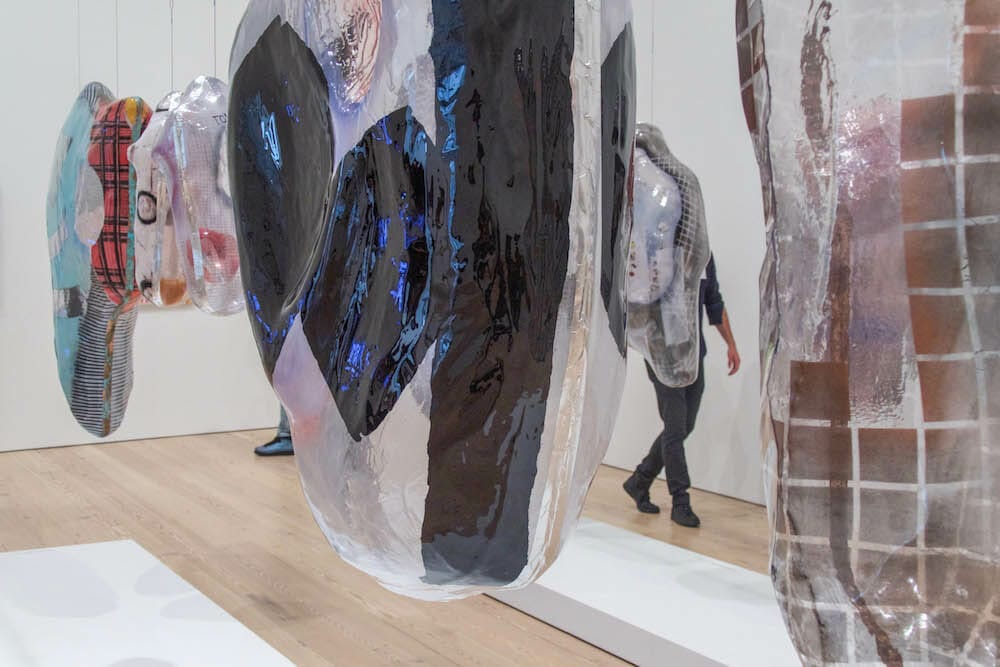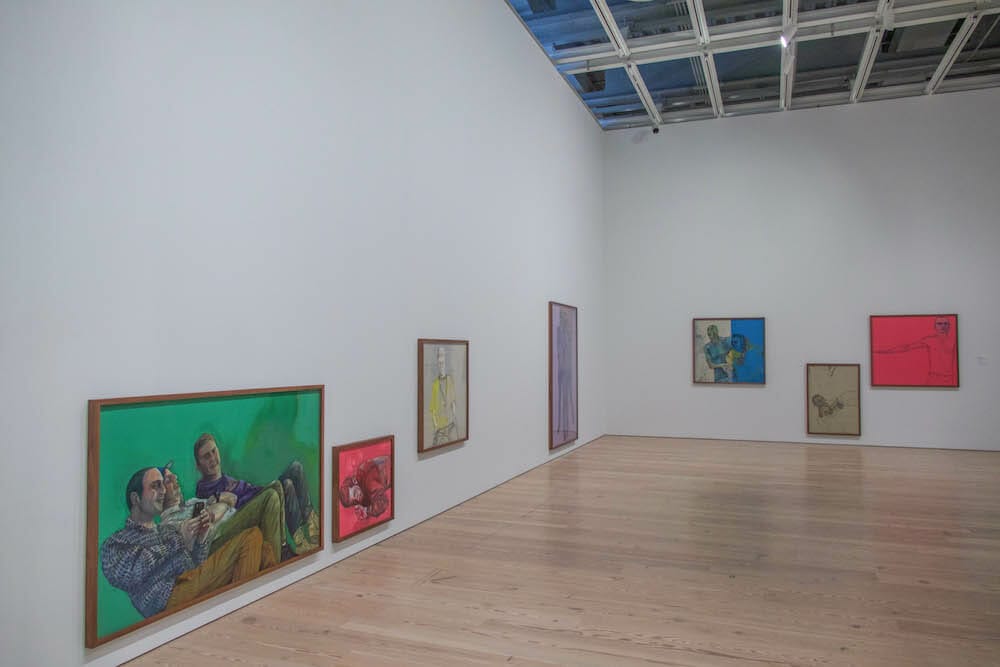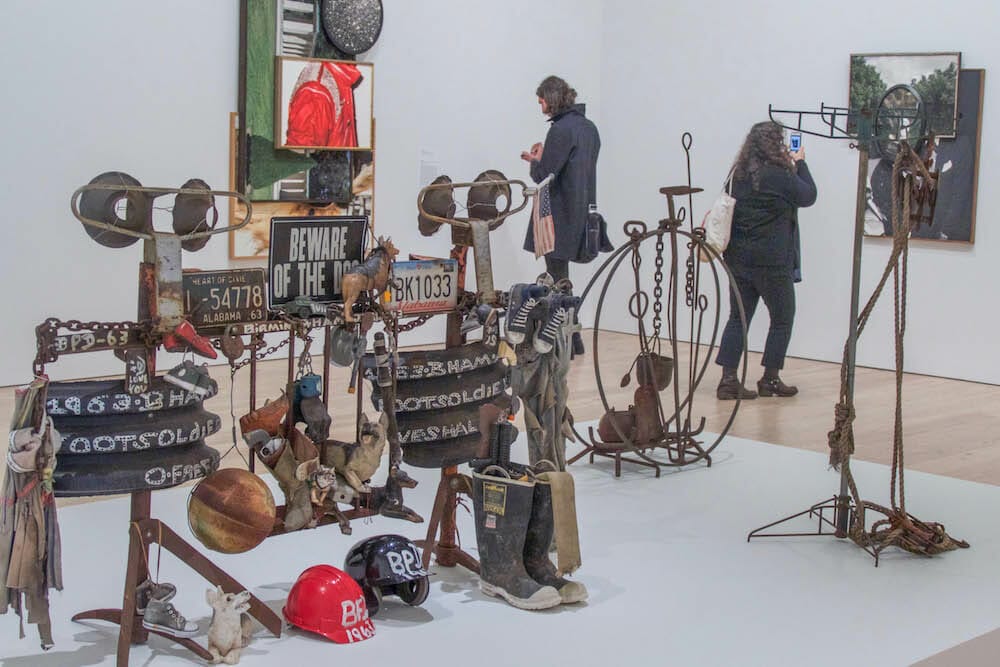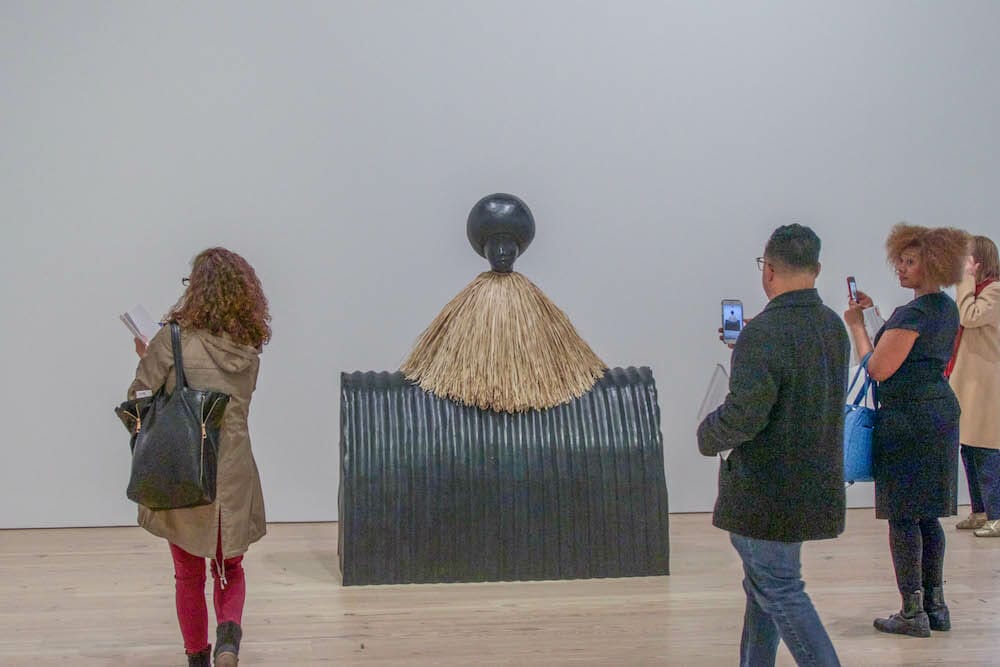How you feel about the Whitney’s claim for their Biennial to capture the zeitgeist of our time likely is affected by where you choose to begin your tour. If your elevator opens to the sound of the National Anthem and your visual frame is overtaken by animated images of football players taking the knee, you know the art is circa 2019. Just around the corner you then see fragmented motion images—that might strike you too as similar to most depictions of Shiva—of Simone Biles and other award-winning gymnasts, many of whom are now known to have been victims of sexual assault.
It’s actually the many art pieces that are looking back on history-- some recent, some not so recent- -that struck this writer as most grounded in the sensibilities of today and a barometer of now. A Native American artist turns the trail of tears into pageant banners. The fictional headlines of Central Park wilding that in part launched Trump to where he is today are revisited. Titanic lore puts a lens on climate change. The Frankenfoods making their way into our dietary confusions are there too. Sculptures tackle Birmingham’s class and race divides, the leveling of Puerto Rico by hurricane and political neglect, and more.
Whitney Museum Takes Every Other Year Stock of Art World
In the opening remarks we learned that the two curators of this show--- Jane Panetta and Rujeko Hockley-- selected the 75 works by making more than 300 studio visits to 25 cities, adding up to 14 full weeks on the road. They had an eye on the hot topics of race, gender, inequality and concerns for community, among others.
Originally an annual show that was started in 1931, this every other year format for the show was begun in 1973. The Whitney Biennial is widely credited with launching the fame for some of the most widely recognized contemporary artists of the late 20th Century.
For this writer, the opening remarks by Whitney’s Director Adam Weinberg saying, to paraphrase, that in complex times we look to artists for clarity is more than a little overreach. That there are some obviously high quality pieces, and especially the many compelling larger-than-human-scale sculptural works that stop us in our tracks would likely be an opinion shared by many, if not all visitors to this show. On the other hand, a few others might also find in the mix a few puerile pieces downright cringe worthy.
How interesting that one of the strongest works is really about the Whitney itself. This is an expose of how one of the Whitney’s biggest funders and Board Members -- Warren B. Kanders, the vice chair of the Whitney Museum’s board --
came by his wealth by providing Geneva Convention defying weaponry to totalitarian governments who use it against their own people – in Turkey, Israel, at the US border and beyond. The pre-history is that protesters had lined the Whitney’s floors to put a spotlight on this. The Biennial’s popular film and related exhibits by Forensic Architecture is a sort of Heisenberg Principle meets politics meets art moment.
Visiting the Whitney Biennial outside of the opening ceremony will likely, in this writer’s view, let each artwork better speak to you on its own terms. The artists-give-clarity overreach imposed on the expectations for this show seems to be a too tall order. That said, you will be no worse for the wear in taking in the Whitney Biennial. It’s worth a few hours of your day and the curators DO mightily succeed in getting us to think about what artists today can and do say about our times.
RECOMMENDED
For a list of the artists whose work is included in this Biennial 2019 exhibit and more information visit the Whitney Museum website.
When:
Thru September 22, 2019
Where:
Whitney Museum
99 Gansevoort Street
New York, NY 10014
Tickets:
| $25 | Adults |
| $18 | Seniors and Students |
| $18 | Visitors with Disabilities* |
| Free | 18 and Under |
| Free | Members |
*Free admission for one accompanying care partner

